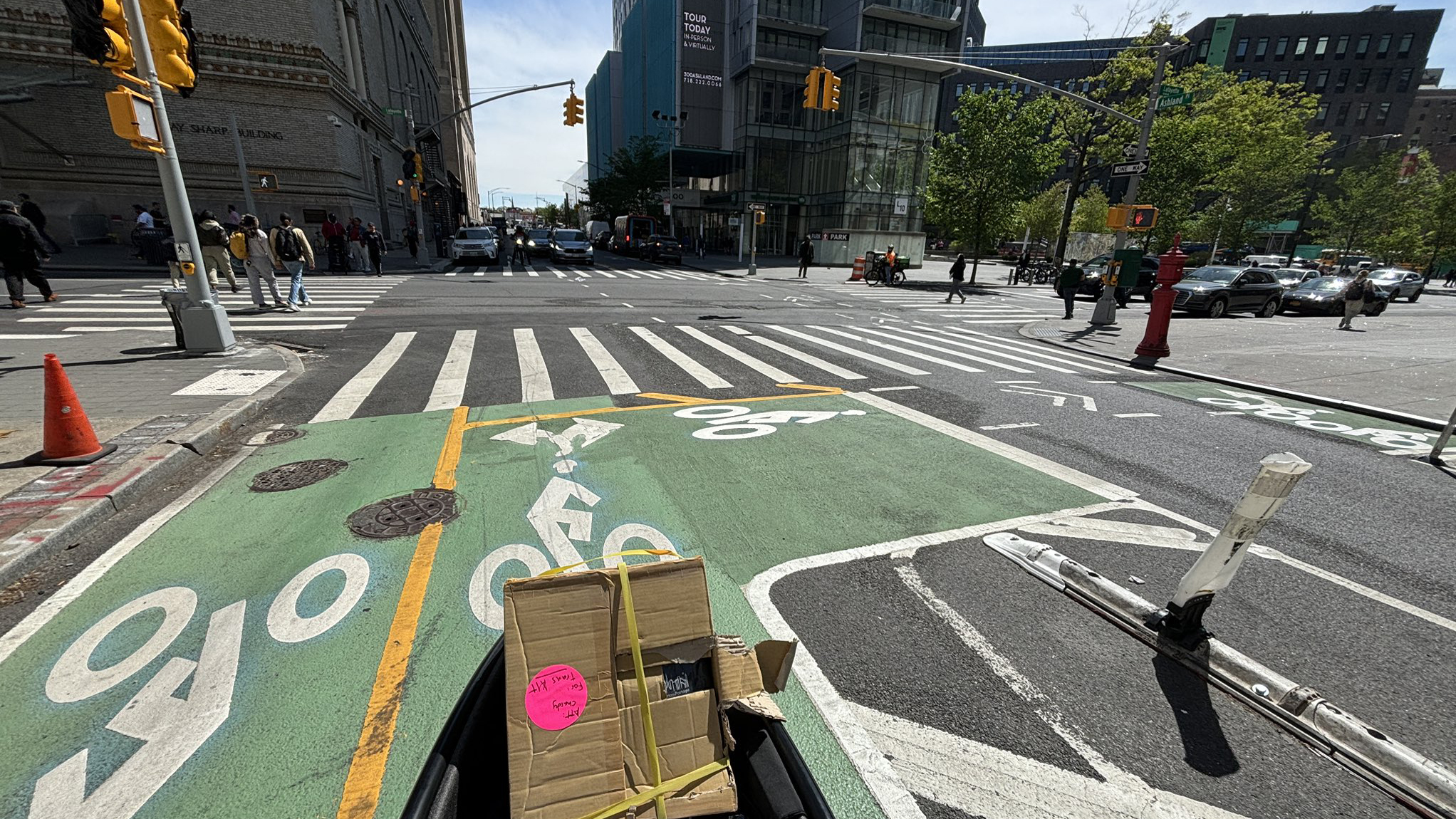To make walking safer, New York City will re-engineer 60 miles of streets per year and pilot the use of neighborhood-scale 20 mph zones, the city's top electeds and transportation officials announced this morning. The commitments are among several street safety measures unveiled today, accompanying NYCDOT's release of a landmark report analyzing the causes of serious pedestrian injuries and deaths, which affect thousands of New Yorkers every year.
Mayor Michael Bloomberg, Council Speaker Christine Quinn, Transportation Commissioner Janette Sadik-Khan, and NYPD transportation chief James Tuller were all on hand for the press event in Queens where the initiative was announced.
“We’ve made historic gains in reducing traffic fatalities, and this
year we are seeing pedestrians fatalities decline again,” Bloomberg
said in a statement. “But we still see too many families devastated by
traffic accidents. The report and actions detailed today, including the
installation of pedestrian countdown signals across the city, will make
our streets even safer, especially for the pedestrians who, year in and
year out, account for the majority of New York’s traffic fatalities.”
The report, which you can download here, analyzes crashes that caused 7,000 serious pedestrian injuries and deaths in New York City. Among the findings: Driver inattention is the most common cause of crashes that seriously injure or kill pedestrians; failure to yield to pedestrians in a crosswalk is responsible for 27 percent of such crashes; speeding is a factor in more than 20 percent of such crashes, but most New Yorkers don't know the citywide speed limit is 30 mph.
DOT has outlined a range of actions to meet the agency's goal of cutting pedestrian fatalities to half the 2007 level by 2030, a target set in its strategic plan, known as Sustainable Streets, in 2008. Each year, the agency will re-engineer 60 miles of streets to improve safety. Along these corridors, at least 20 miles of streets will receive "intensive" safety improvements, such as sidewalk widenings or pedestrian refuges, that alter the geometry of the street. DOT will also launch the city's first 20 mph zone in a yet-to-be-selected neighborhood in 2011, part of a pilot program intended to "slow traffic on an area-wide, rather than individual street, basis." The citywide roll-out of 1,500 pedestrian countdown signals, which Bloomberg referred to, comes after a DOT pilot showed that they reduce injuries and that pedestrians prefer them to regular signals.
The investment in designing safer streets will be paired with several traffic enforcement and education measures. We'll have a more detailed re-cap, with highlights from the press conference, later today.





